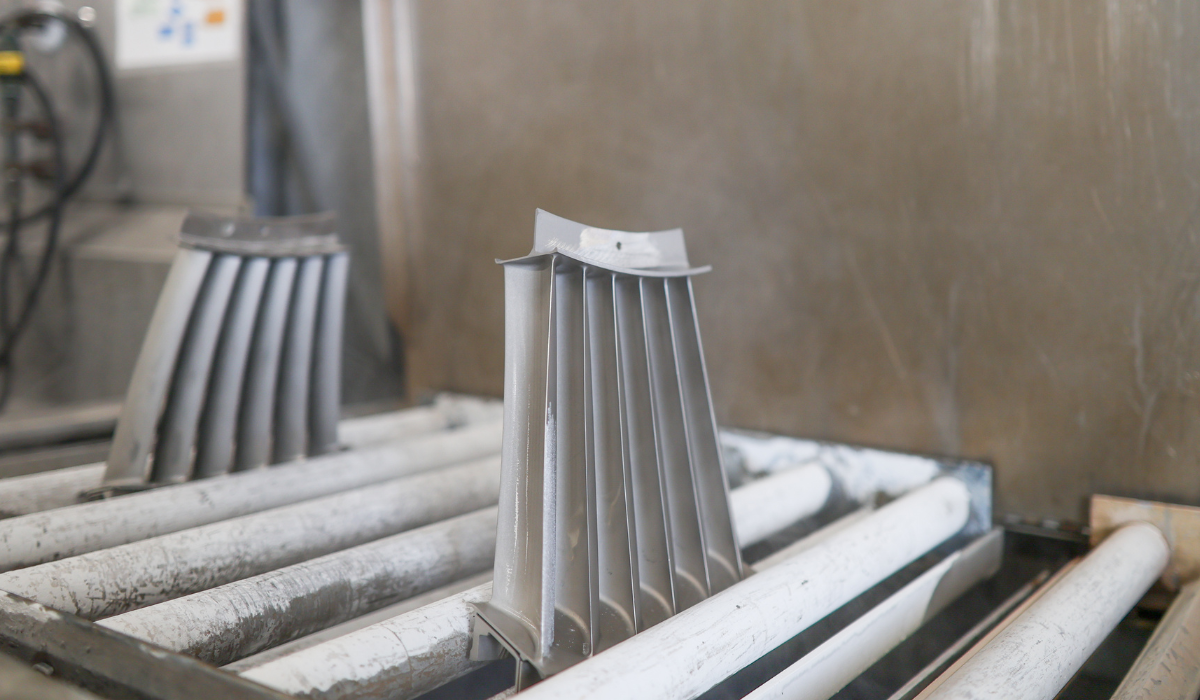When it comes to jet engines, there are some so large you can stand inside them, with the huge blades towering over you! Of course, as you go through the engine, the blades and other parts become progressively smaller. This compresses the air in the engine. Eventually, fuel is injected and ignited, producing the thrust that propels the aircraft.
Since the jet engine’s invention, engineers have worked continually to improve its performance. Put most simply, the hotter the engine, the more efficient it runs. This has led to ever-increasing temperatures in the engine, which has required the development of nickel-based superalloys, each more heat-resistant than the last.
Below, we explain why coatings are vital, a bit of history, and how the specific types of coating processes work.
Why Coatings are Essential + How They Work
While developing those heat-resistant nickel-based superalloys was important, more was needed. The extreme pressures and temperatures in jet engines can result in elevated oxidation rates of engine components. To fight the oxidation on your car, generally referred to as rust, we paint it. A similar approach was developed for jet engine parts, except that we “coat” the part with aluminum rather than applying paint.
You may be thinking, But aluminum is weak, it melts at relatively low temperatures. How can that possibly help?
It’s effective thanks to a metallurgical quirk. At the high temperatures at which we coat the aluminum, atoms are deposited on the surface of the parts. Aluminum has a strong liking for nickel. And, as the name implies, nickel-based superalloys have a lot of nickel. Thus, nickel atoms migrate out to meet the aluminum, forming a special structure called nickel aluminide (NiAl) on the surface of the jet engine components.
When NiAl is exposed to high temperatures, it oxidizes to produce aluminum oxide, which strongly resists removal from the part’s surface. Remember the rust on your car? Iron oxide doesn’t stick. It spalls off, exposing fresh iron and leading to more rust, and the cycle continues until your car falls apart.
It’s this peculiarity of aluminum oxide that makes it useful to us. As this oxide coating thickens, it slows the rate of further oxidation. This is why we work so hard to add an aluminum coating to jet engine parts!

The Evolution of Coating Processes
So, how exactly are aluminum atoms applied? It’s a long, complicated story. To sum up, some very smart engineers tackled this problem after World War II. They discovered that a mixture of aluminum, ammonium hydroxide, and aluminum oxide would produce an aluminum chloride gas when heated. If nickel superalloy parts are around this vapor at high temperatures, the aluminum will leave the gas and deposit on the part surface.
This discovery led to the development of the first coating system, Pack. Its name came from the process, as the part was “packed” in a mixture of powder that would produce the aluminum chloride gas needed to “coat” it.
While we still do Pack coatings today, like everything else, the system has been improved. It was noted that the coating produced by Pack coatings is not necessarily all that clean. The powder mixture near the part surface becomes part of the coating. In hindsight, the improvement seems simple, but it took a while to implement.

The engineers thought that if we no longer buried the part in the coating powder, we would no longer “encapsulate” some of the coating powder in the coating. This led to Above the Pack (ATP) coatings—it may not be the catchiest phrase, but it’s descriptive! ATP coating places the coating material around the parts, but NOT touching them. The coating vapors produced coat the part without powder encapsulation.
ATP coatings are still in use, but while they are a nice improvement over Pack coating, fine control of the process was lacking due to the use of solid components that make the coating gas during heat treatment.
Again, years went by, and eventually, someone figured out how to produce the aluminum chloride gas in an external furnace. With this approach, the coating gas could be plumbed into the coating furnace, and one could turn the gas off and on with a switch. This is how Chemical Vapor Disposition (CVD) coating was born! Later, CVD coating was further improved, albeit by a more complicated process.

Offering Robust Coating Solutions
Hopefully, you now understand a bit more about the coating of jet engine parts! Walbar Peabody specializes in repairing and overhauling these hot section engine components. As such, we’ve gained many years of expertise in each process and can coat parts by Pack, ATP, or CVD, depending on each customer’s requirements.
Do you have more questions about our processes or whether we can support your components? Contact us today to learn more!
